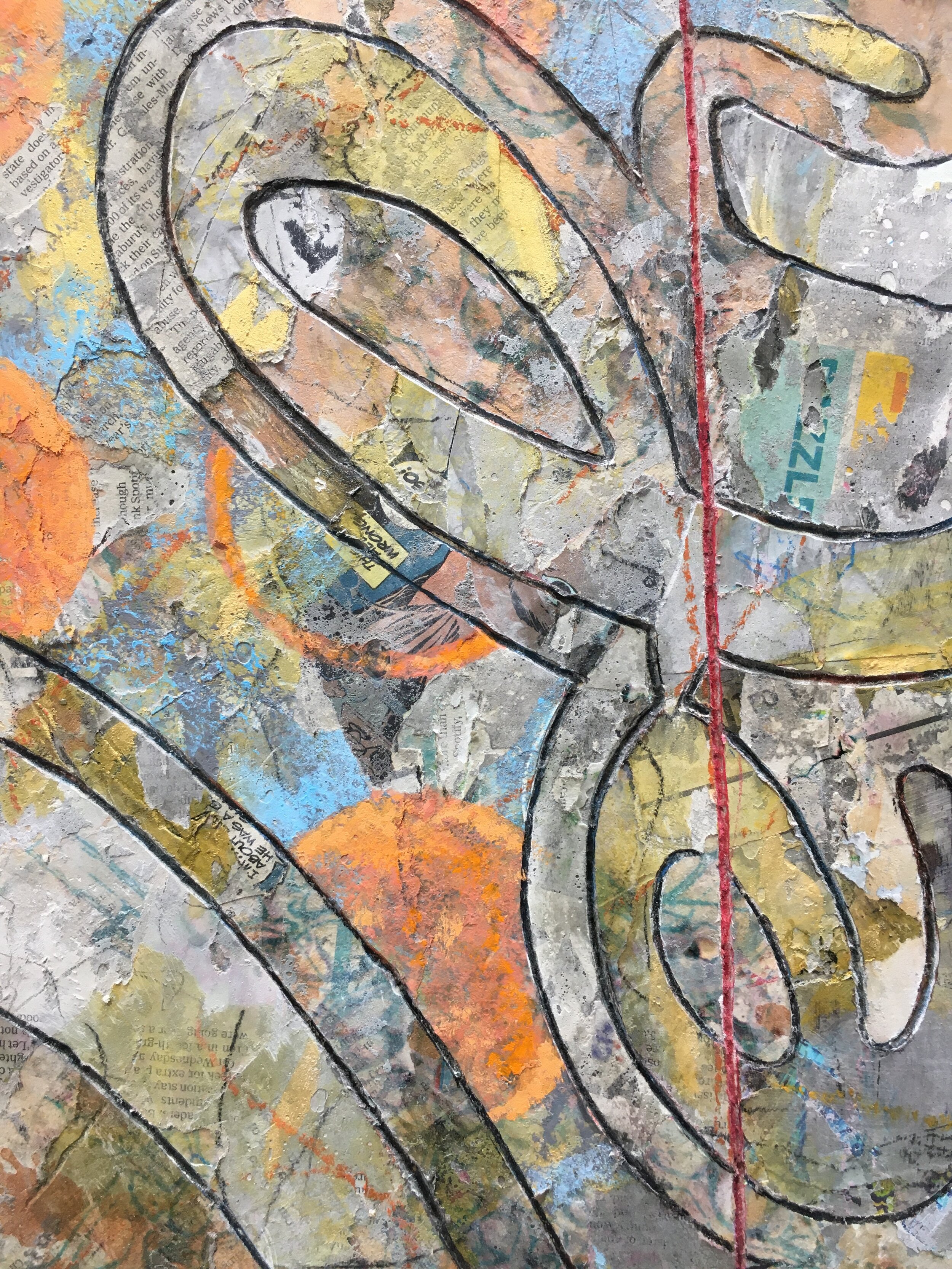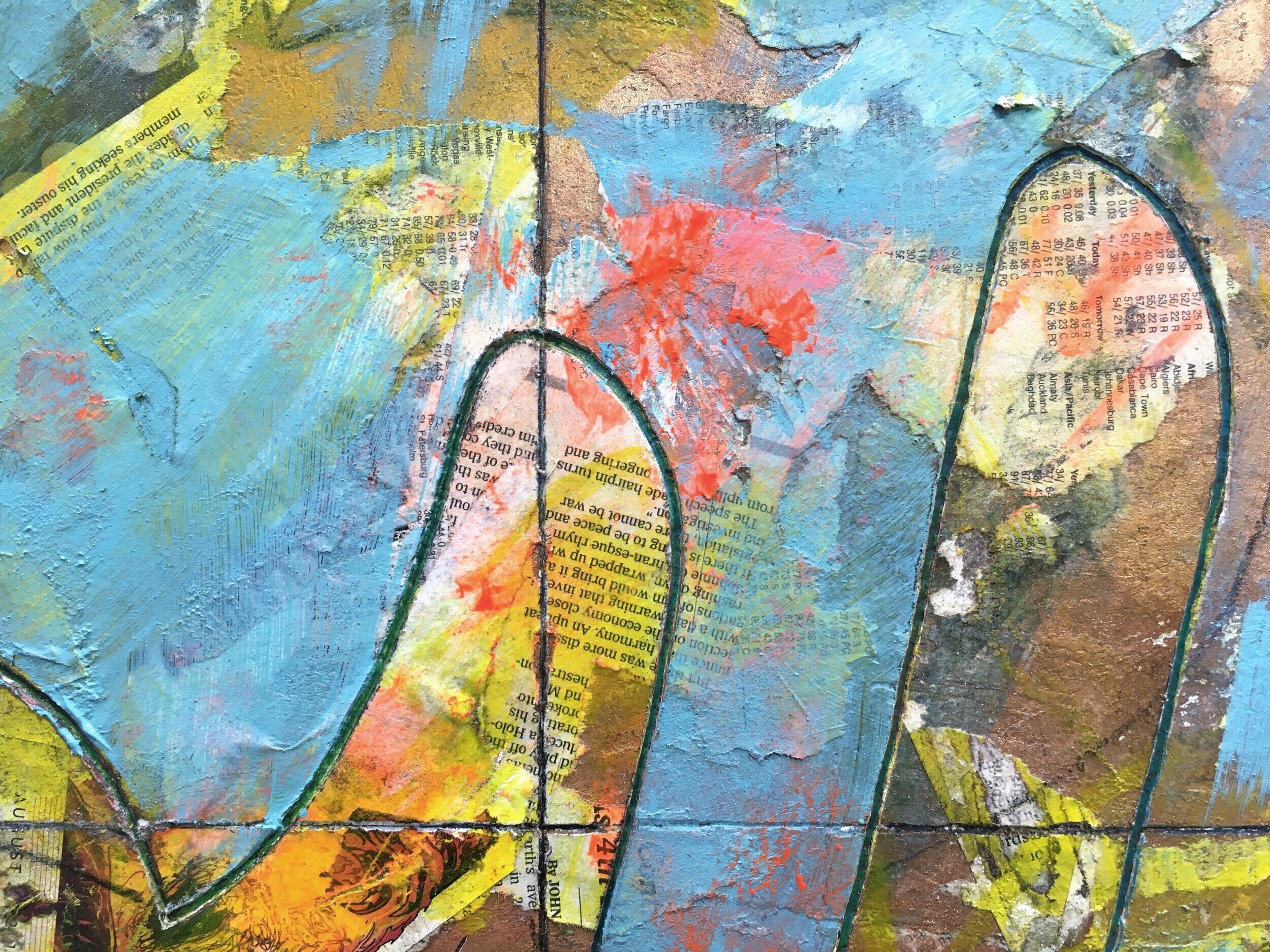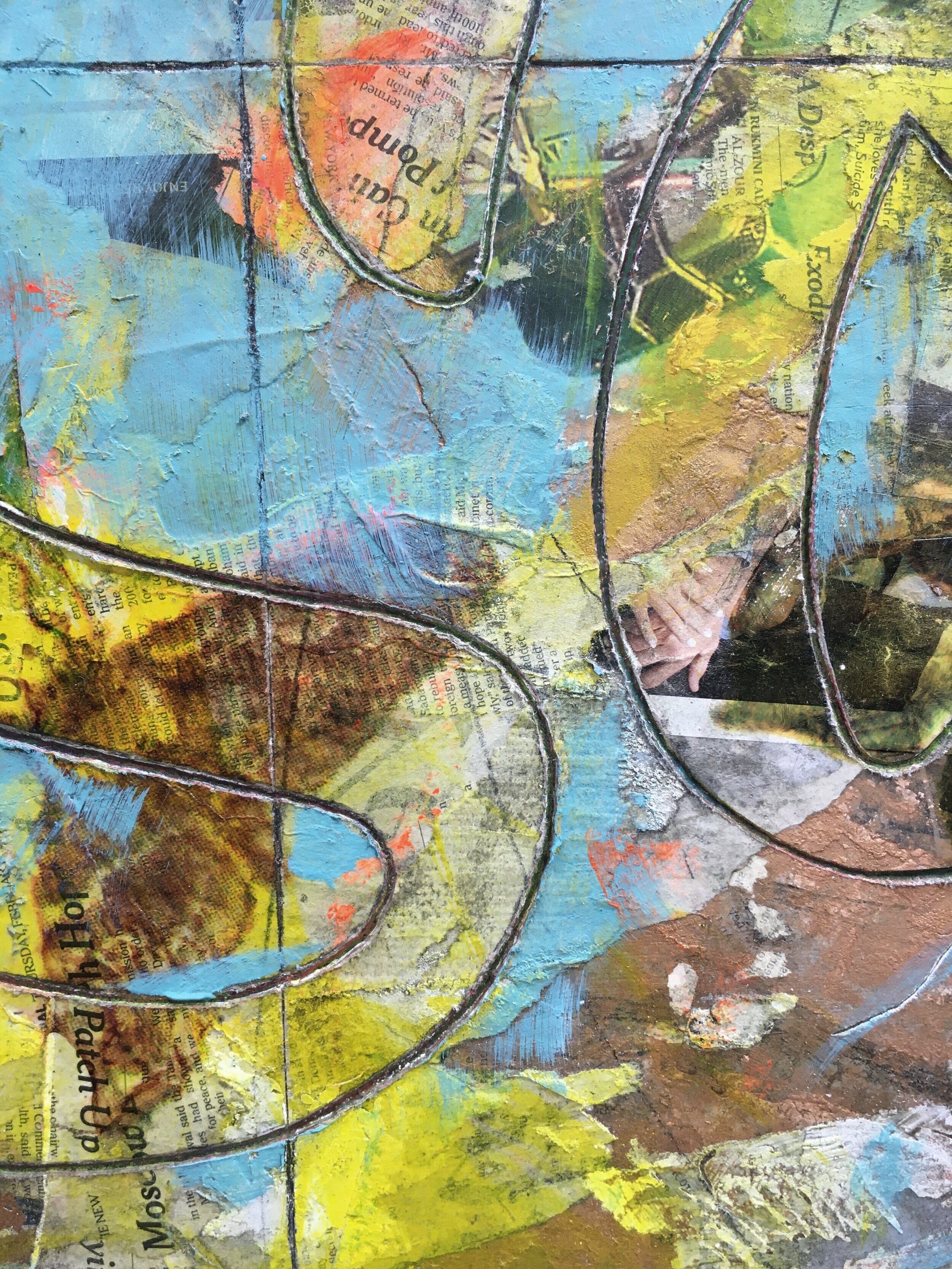In previous work, I explored subjects about ancient life hundreds of millions of years old like species of jellies, dragonflies, horseshoe crabs still in existence today. I wanted to contrast that somehow with the immediacy of change in modern society, whose future existence seems to hinge on the chaos of global warming and climate change, disruptive technology, the threat of fake news and real fake videos, and global pollution. I’m fascinated that modern humans have been around for little more than 200,000 years yet the planet is over 4 billions years old. Ancient life has occupied the planetary timeline for billions of years - humans a mere sliver of that. Scientists are now warning of the extinction of millions of species - and perhaps eventually our own - in the coming decades driven by human causes of industrial and urban output, unbridled destruction of natural habitat, and the ceaseless hunger for natural resources. Human life feels fleeting and its existence short in the timeline of the universe.
This ephemeral notion is something I’ve been exploring over the years through collage and using discarded materials: billboard vinyl, newsprint, ad posters, magazines, book pages, any mass produced imagery suggestive of the consumptive and disposable society of now. Collage would be interspersed with large transfers of photos taken of jellyfish, dragonfly wings, moths - symbols of ancient life with some species exhibiting relatively unchanged morphologies across hundreds of millions of years. Stenciled text and abstract shapes are a recent introduction in a further exploration of pop culture in ads and social media.
This piece, ‘Soul’, has put text, as an experiment, front and center instead of photographic imagery. As usual I had been working on building up the layers of collage like a fossil. I was thinking how language is mutable like all organisms through time. It also has its own ‘DNA’ as some words are copied or transformed to all variations of degree across several languages, and are themselves ‘mutating’ in time in their form and meaning. I wanted the text to appear as a stenciled ad with its hard linear curves yet looking like a ghost of itself. My interest in fossils and archaeology has inspired me to be more interested in the destructive and ‘excavative’ possibilities of my process.
Partly due to a period of boredom and frustration with working on this piece for many weeks, I started to rip out - through various methods - several layers of collage to reveal what’s underneath. The random and surprising conflation of imagery revealed on the surface from this process inspired me to ‘dig’ further. With the use of hand and machine tools, I also carved rough and straight lines, and gouged or tore into the collage layers. It was fun.
One of my favorite and most challenging painting professors in college, Richard Reese, used to joke about my first series of paintings, which seemed to display a pained, hesitating use of the brush. One day, as he was studying the work, he just asked me, “Why are you painting at all? You seem more interested in the photos in your pieces. You don’t really like to paint.” I was stunned. I immediately knew what he was saying was true. It was from that point on, I began making assemblages of found objects incorporating photos, collages, works with little or no paint.
Over the last 7 or so years, I’ve reinvestigated the use of paint and the brush as well, because I love color and wanted to use it to amplify the work somehow. In ‘Soul’, I’m using paint to cover, blur or smear distinctions between images and layers. Paint is applied using sponges, fingers, and cloth. I suppose I’m not interested in using brushes at all. I like the random messiness of the the current method because I don’t want to illustrate anything intentionally as you would with a brush.
Self-proclaimed ‘anti-painting’ artists like Joan Miro and Brice Marden’s use of tree branches for brushes have always inspired me because of their strong belief in the idea of accident, randomness, and the unintentional as a valued resource towards discovery and excitement. Why did I use the word soul? It could have been any word really. The word echoed in my mind as I heard it repeated in conversation, news articles, social media, referencing the U.S. losing its soul, democratically or socioeconomically.
The current POTUS is perhaps one of the most divisive in history, weakening social and economic equality by advancing legislation and judicial appointees limiting voting access, repealing laws and institutions meant to preserve the environment, access to citizenship, higher education, healthcare for minorities. He has shown zero respect in his language and persona directed at women, people of color, LGBTQ, and the poor.
The word ‘soul’, also refers to the absurdity notion of a ’corporate soul’ in this country. I’m reminded of conservatives referring to companies as being ‘people too’ during the global protests against Wall Street and multi-national conglomerates. The text is an empty space really - full of varied meanings yet void of context. It ended up looking like a fossil itself, in the excavative, destructive transformation of the piece. A fossil like a moment in time, transient and mysterious in its inability to tell all.













